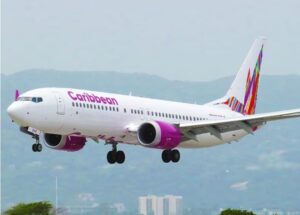|
By : DENNIS COSTA
Edition: April 2, 2015 | Volume: 43 | No: 12
In mid-February, the Puerto Rico Broadband Taskforce, a public-private partnership, unveiled the Gigabit Island Plan (GIP), a document of nearly 100 pages that outlines a strategy to significantly increase average broadband speed and use on the island among residents and businesses. The implications of improving local broadband speed go much further than just getting Netfl The plan focuses on setting up a network of fiber-optic cables, which can transmit data at blazing fast speed. While telecommunications providers have used such cables in their own networks for years, connecting them directly to households and businesses—known as fiber-to the- home—has been almost nonexistent. As a result, broadband speed for the island’s consumer market top at around 100 megabits per second. Fiber-optic connectivity, on the other hand, can reach a speed of one gigabit per second; a gigabit equals about 1,000 megabits. The GIP follows efforts that have helped turn Singapore into an economic powerhouse in almost record time. Several cities across the U.S. mainland—among them Kansas City, Mo.; Cedar Falls, Iowa; Chattanooga, Tenn.; Cleveland; and Urbana- Champaign, Ill.—have successfully adopted similar initiatives.
Moreover, President Barack Obama’s administration recently renewed its push toward establishing additional gigabit communities throughout the country, with Obama going as far as visiting Chattanooga and Cedar Falls in January to launch a national community-broadband initiative. “The GIP represents Puerto Rico’s true transformation,” said government Chief Information Officer (CIO) Giancarlo González. “It is a golden opportunity to strengthen the economy, increase access to healthcare and enhance education, and could even benefit the real-estate market.” Several people agreed, among them Peter Glynn, who chairs a science & engineering department at Stanford University. “This could really have a significant impact on Puerto Rico’s growth, and would certainly be aligned with helping to create more tech-oriented spin-offs from the University of Puerto Rico and elsewhere on the island,” he said. Javier Rúa, president of the Puerto Rico Telecommunications Regulatory Board (TRB), is also a key supporter. “The potential for new businesses and services to grow out of this initiative is tremendous,” he said. “When internet access technology changed to allow for broadband connections measured in megabits, it gave birth to services such as You- Tube, Netflix and Skype. Who knows what can be achieved once we make the jump to gigabits.” Likewise, federal officials have emphasized the importance of establishing broadband networks with speed measured in gigabits. For example, in a January 2013 column published in Forbes magazine, former Federal Communications Commission Chairman Julius Genachowski stated: “[It] isn’t just a matter of consumer convenience…it’s essential to economic growth, job creation and U.S. competitiveness.” Several reports support this idea. A 2011 study by research firm Strategic Networks Group found that local economic growth and secondary investments enabled by broadband expansion are 10 times those of the initial investment, and their contribution to GDP is 15 times that of the initial investment. Moreover, the U.S. Bureau of Labor Statistics recently found that jobs that depend on overall broadband availability could increase 25% by 2018. Fiber optic to the rescue Despite advances carried out in Puerto Rico regarding broadband availability during the last few years, particularly in the wireless telecom sector, Puerto Rico will not be able to advance further into becoming a true gigabit island unless a robust fiber-to-the-home network is put in place. Nowadays, such connections on the island are rare, but that will change during the next five years, TRB’s Rúa said. Apart from joint public-private efforts outlined in the GIP, companies such as Critical Hub are testing the waters. In the same way that Google is deploying fiber-to-the-home in the U.S. mainland, Critical Hub is designating so-called “fiber-hoods” for its Optico Fiber offering, in which it gauges customer interest in a particular sector. If enough customers sign up for the service to justify the investment, the company carries out the fiber deployment. Those methods are employed because setting up fiber-optic networks has proven very costly, frequently requiring breaking up roads to accommodate the cables. This has prompted federal policymakers to establish a “dig once” protocol on the U.S. mainland. The policies allow broadband-infrastructure improvements and deployment to take place alongside other public works, thereby lowering investment costs. However, Puerto Rico offers a unique opportunity in this regard, Rúa said. “There is so much infrastructure already in place that in this case, we can implement not only a dig-once, but also a dig-zero policy.” A new venture called, “Vía Digital,” is a prime example of this, with plans to deploy fiber-optic cables through an empty streetlight conduit running through the San Juan sectors of Miramar, Santurce, Hato Rey and parts of Río Piedras— among the most densely populated on the island. “Back in the 1990s, the underground conduit was built to connect all the stoplights in the area,” Rúa explained. “Today, the stoplights communicate with each other wirelessly, which means the conduits aren’t being used.”
The TRB has taken charge of leasing the 55,000-feet conduit to interested telecom providers, with a request for proposals scheduled in April. Government expenditures for the project will be minimal, with private companies carrying out the bulk of the investment in deploying the cables, as CARIBBEAN BUSINESS previously reported (March 12). Another noteworthy initiative is dubbed Project ZUM. Led by the Puerto Rico Aqueduct & Sewer Authority,the venture aims to deploy cables through several sewage and aqueduct conduits. Economic benefits galore The economic benefits of carrying out these programs may quickly be apparent, at least when it comes to the real-estate sector. “Once the fiber-to-the-home system is in place in a specific area, property prices per square foot are estimated to increase by up to $8, while rental rates can go up by 20%,” said González, who before his role as government CIO founded a real-estate website. “In all,it can generate around $150 million in additional property value to key areas of the San Juan metro area.” With this in mind, the CIO office is planning to hold a seminar for realtors this month to emphasize the importance of fiber-optic initiatives for the real-estate sector. Progress already underway The GIP represents a rare instance of continuity across successive government administrations, as the initiative is an updated version of the Puerto Rico Broadband Strategic Plan, launched by the previous Luis Fortuño administration in 2012. Of note is that since the original plan was published, significant advances have been carried out on the island, specifically regarding broadband availability. “In 2011, no residential broadband provider was offering service at download speeds above 25 Mbps (megabits per second),” the GIP states. “In 2014, 53% of households across Puerto Rico have the choice of subscribing to broadband at speeds of 100 Mbps.” The private sector has largely driven investment in this area, especially cable and wireless telecom providers. In particular, the aggressive deployment of next-generation mobile networks, specifically fourth-generation Long Term Evolution, has been the main factor for the island’s 99.9% mobile broadband coverage, on par with the U.S. mainland. Broadband adoption has also improved, although it remains a challenge. For example, in 2014, about 46% of Puerto Rico’s households subscribed to broadband service, up from 31% in 2010, according to the GIP. This represents an increase of around 377,000 adults with home broadband service.
Tackling adoption However, one key challenge facing GIP supporters is the issue of adoption; namely, not enough people are signing on to broadband because they are unaware of the benefits. “While expanded access and enhanced investment in broadband infrastructure is encouraging, without corresponding broadband adoption among Puerto Rico consumers and businesses, further build-out could be deterred,” the GIP states. The TRB has already taken steps to address the issue, particularly among seniors, by holding workshops in 33 of the island’s 78 municipalities. Rúa revealed the workshops have been successful, to the point that the TRB plans to expand the initiative’s scope in the coming months. Several legislative bills under discussion could also pave the way, the officials said. Chief among these is Senate Bill 873, which would require the Education Department to include the availability of a textbook e-book (short for “electronic book”) license along with the physical book itself. “Public school students aren’t allowed to bring their textbooks home to do assignments,” González explained. “If students are able to access an e-book version of the textbook online at home, it would prompt their parents to subscribe to broadband services.” According to unofficial estimates, implementing this measure could yield savings of up to $250 per student annually. “Another measure that could raise awareness on the need for ultra-fast broadband is to create an economic indicator that could accurately measure its impact on the island,” Rúa said. Raquel Noriega, vice president of public policy at U.S.-based nonprofit Connected Nation, added that Puerto Rico could pioneer the adoption of this economic indicator on the global stage. “The island has certain advantages that would allow for an easier measurement process. For example, Puerto Rico is connected to the rest of the world by only seven submarine cables,” she said. Most importantly for Rúa, the development of an economic indicator would bring Puerto Rico closer to becoming a bedrock for a long sought after, knowledge-based economy. “Puerto Rico keeps talking about cement sales as an indicator of economic development,” he said. “It’s time we embrace the digital economy and all that it can bring to the island. We aren’t talking about a finite resource such as land, but about the internet. As an economic resource, it has no limits,” he added. |

Caribbean Airlines inicia operaciones en el aeropuerto internacional Luis Muñoz Marín
La aerolínea operará tres vuelos semanales entre Trinidad y San Juan El Aeropuerto Internacional Luis Muñoz Marín (SJU) cuenta con una nueva aerolínea, tras el inicio de

 ix streaming quicker. For public officials, the plan’s successful implementation may give Puerto Rico the economic injection and job creation engine it needs, to the tune of $2 billion in economic activity and the creation of about 15,000 jobs, according to unofficial estimates.
ix streaming quicker. For public officials, the plan’s successful implementation may give Puerto Rico the economic injection and job creation engine it needs, to the tune of $2 billion in economic activity and the creation of about 15,000 jobs, according to unofficial estimates. These so-called “gigabit communities,” developed partly by the public sector and private players such as Google, have yielded benefits extending far beyond those of consumers. According to a Washington Post article published last September, U.S. cities with gigabit fiber connections report 1.1% higher per-capita gross domestic product (GDP) than cities lacking such internet speed.
These so-called “gigabit communities,” developed partly by the public sector and private players such as Google, have yielded benefits extending far beyond those of consumers. According to a Washington Post article published last September, U.S. cities with gigabit fiber connections report 1.1% higher per-capita gross domestic product (GDP) than cities lacking such internet speed.
 These advances have in part spurred the island’s tech industry. According to the latest data from the Planning Board, the local information sector has had an annual growth rate of 3.8% and accounted for $2.6 billion in economic activity in 2013, roughly 2.5% of Puerto Rico’s GDP.
These advances have in part spurred the island’s tech industry. According to the latest data from the Planning Board, the local information sector has had an annual growth rate of 3.8% and accounted for $2.6 billion in economic activity in 2013, roughly 2.5% of Puerto Rico’s GDP.



